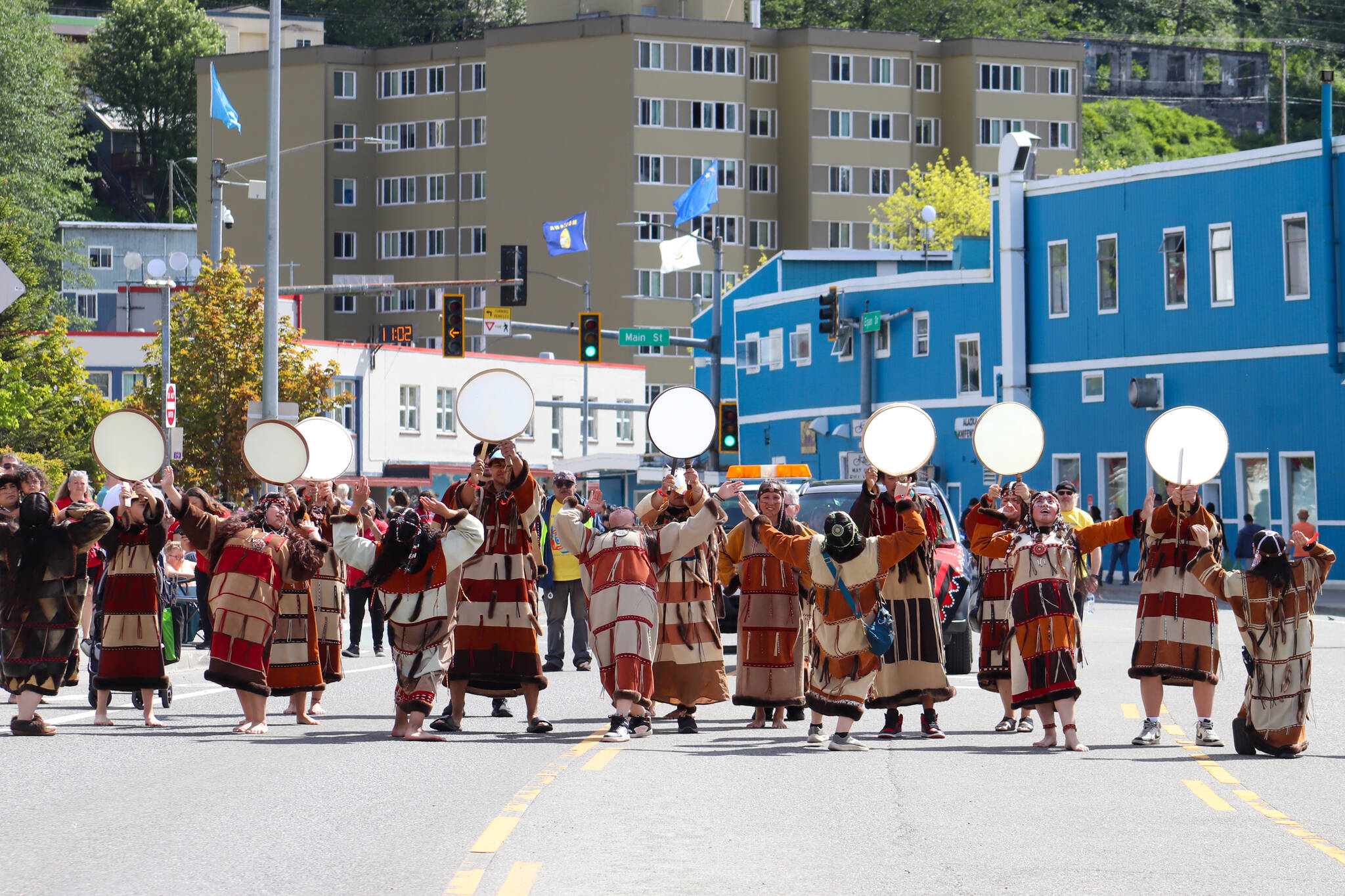Hundreds of Indigenous dancers celebrated and shared their culture with spectators crammed along downtown Juneau’s streets during the traditional Celebration parade on Saturday, the last day of the iconic dance-and-culture event.
For Crystal Dushkin, president of the tribal government for the Native village of Atka in the Aleutian Islands, dancing in the parade for the first time highlighted a historical connection between tribes uprooted during World War II, and offered a healing moment for her dance group.
After the Japanese attack of the Aleutian Islands on June 3, 1942, officials forcedly evacuated Alaska Natives from the Aleutian and Pribilof Islands. These Alaska Natives were relocated to six areas in Southeast Alaska, as far away as 1,500 miles from their homelands.
“We have a historical connection with Southeast because during World War II there was an evacuation of nine of our villages and over 800 of our people were brought to internment camps here in Southeast Alaska,” Dushkin said. “A lot of our ancestors that died in those camps are buried here in Southeast Alaska and our people, after three years in those camps, were finally able to go back home to Atka and to other villages. But there were a lot of our people who stayed here in Southeast and ended up marrying here, having families.”
This week 21 members of Atx̂am Taliĝisniikangís, also known as the Atka Dancers, came to Juneau for the group’s first Celebration to revitalize and share their traditional Unangax̂ (Aleut) culture. Nearly 1,600 dancers from various tribes are taking part in the four-day biennial gathering that originated in 1982, with the parade being one of the most visible events to the thousands of cruise ship passengers and other people sharing downtown with the Celebration participants.
Back home, Dushkin shares her knowledge of dance and language through culture camps, classes, and community events. She was instrumental in the formation of the Sand Point Cultural Camp where she has been teaching since its inception in 1998.
Founded in 1995, the Atka Dancers have helped create dances, lyrics and Unangam Tunuu translations for songs.
“It’s an honor to be accepted to participate in something this beautiful,” Elder Sally Swetzof said. “It’s so important for not just Southeast Alaska, but all over our state of Alaska. It’s important that we join and support each other’s cultures and traditions.”
Swetzof teaches regalia and beaded headdress sewing, traditional foods, Unangam Tunuu, dance, and drumming at the Urban Unangax̂ camp.
Tribal members from other communities across Alaska engaged the crowd during the parade through singing, drumming and embracing their loved ones as they danced in their regalia through the sunny streets.
During the past four days Celebration has featured a variety of events, such as a processional Grand Entrance, a Native artist market, a juried film and art show, the premiere of “Tlingit Macbeth,” a toddler regalia review, an Indigenous fashion show, and more.
The final closing for Celebration is the traditional Grand Exit at 5 p.m. Saturday in Centennial Hall. The Dakhká Khwáan Dancers (People of the Inland), a Tlingit group based in Whitehorse, Canada, are scheduled to lead the Grand Exit.
• Contact Jasz Garrett at jasz.garrett@juneauempire.com or (907) 723-9356.
More photos from the Celebration 2024 parade

